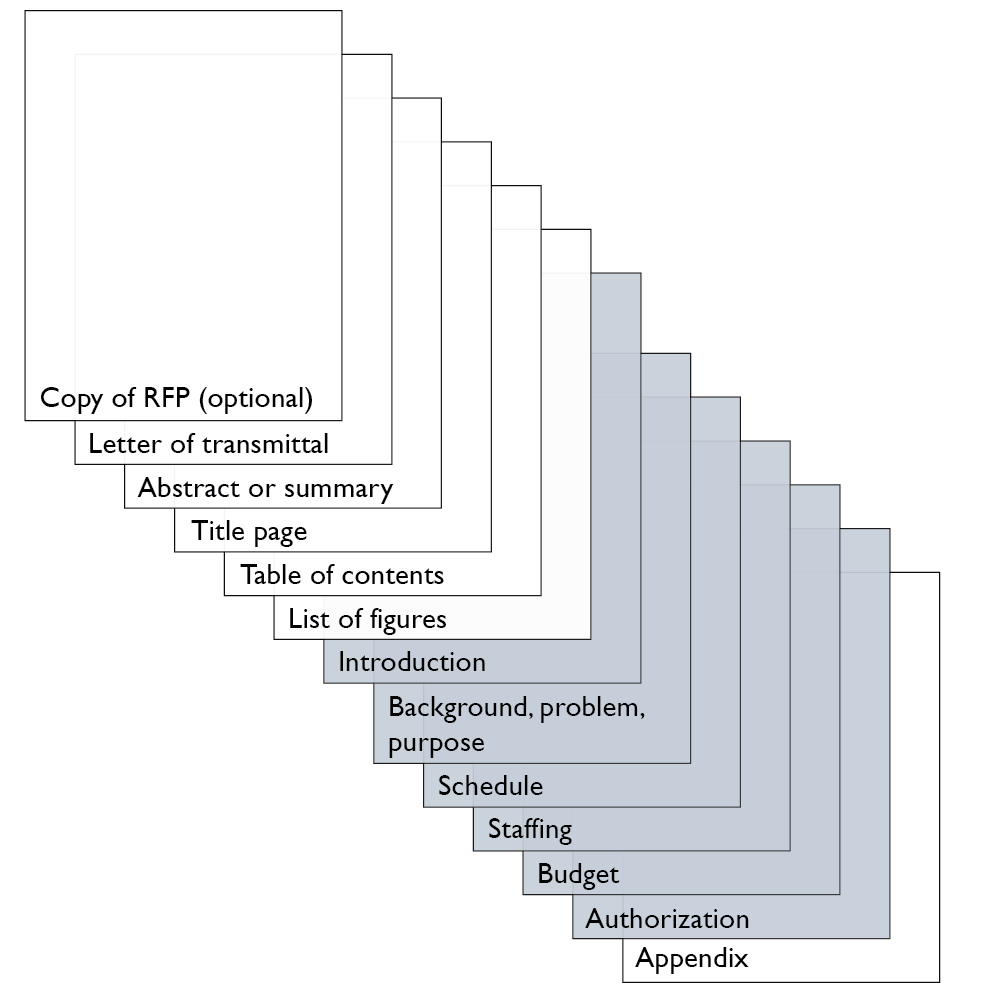- Recognize the differences between types of formal reports and how they can be shared
- Understand what each section of a formal report is for
- Understand how to structure a formal report according to what your audience needs
- Learn how to write a formal report
Types of Formal Reports
Formal reports are much more detailed than informal reports. The label “formal” may intimidate some writers, but the formal report is another form of business writing. You’ll use the same skills in all of your business communications. While you may not need to write a formal report early in your career, you will most likely see one and need to understand its components to effectively contribute to your team.
There are many different kinds of formal reports that you may encounter throughout your career. Here are a few of the more common kinds:
- Research reports gather and explain data; these reports are informational.
- Proposals may be internal to a company in addressing a business situation, or they may come from a solicited or unsolicited sales situation. Formal proposals will include details of the proposed solutions and costs.
- Feasibility reports are a specific type of analytical report. When an entrepreneur or business manager has a new idea, it’s wise to fully explore the idea before making major investments. Some think of this report as a preliminary step to developing a full business plan. While a business plan may take many months to develop, a feasibility report can be developed in much less time, and it still provides excellent direction for decision-makers.
- Business plans are typically informational reports about what a new or existing company plans to do over the next period of time. A business plan may take on a bit more of an analytical tone rather than a strictly informational tone when it is shared with potential investors. In some cases, the business plan may be presented with a request for funds. In those cases, the writing is intentionally more persuasive.
- Other complex recommendations may also come in the form of a formal report. These recommendations result from a business problem that an individual or team has been asked to solve.
Sharing Formal Reports
Formal reports may have internal or external audiences. Formal reports will be significantly larger than informal reports and often include many references and appendices.
Formal reports may be delivered in a variety of formats: documents, letters, digital postings to a website, and so forth. The reader’s comprehension is of utmost importance in selecting the delivery method. No user wants to receive an email with the equivalent of a 40-page report in the body text. Avoid letting the delivery method hold back the meaning of the report.
- Memos are less likely to be used for formal reports, since memos are typically used for short messages, and formal reports are generally lengthy.
- Letters are for external use, and perhaps infrequently used for a document of this type. However, a letter or an email may be used to introduce an accompanying report.
- Web postings are generally external in nature, but companies may have private networks for internal use. Depending upon the organization, this may be a suitable transmittal method.
Remember, just as with informal reports, your delivery method should not change the content or structure of your formal report.
Sections of Formal Reports
Depending upon the situation, the institution you’re working for, and the audience, some or all of the following sections may be required in a specific formal report. Some guides to formal reports will indicate specific sections that are recommended for each type of formal report. However, writers will need to be sensitive to the organization’s requirements or expectations and the needs of the information, then use that knowledge to determine the contents of their report.
The next few pages describe a large number of these section types so you, as a writer, may pick and choose what is appropriate to each situation. It is important to the report’s impact and the writer’s professional credibility to understand the purpose of each of these sections.
In a formal report, there are three major sections.
formal report sections
- The front part includes sections that come before the report itself to establish various items such as the authority of the report and the intended audience.
- The body of the report has many sections of key information and possible analysis. It is the meat of the report.
- The back matter contains sections of material that support the body.
Take a look at Figure 1. In this figure, we see an example of the many potential sections in a sales proposal. This example models a response to an RFP (request for proposal), and each section was required by the customer requesting the bid. The sections show what an RFP report may contain and the author will determine which specific sections are needed based on the report’s purpose, company policy, and audience.

An appendix is a supplementary section at the end of a document containing additional information, references, or data relevant to the main text but not essential to its understanding.